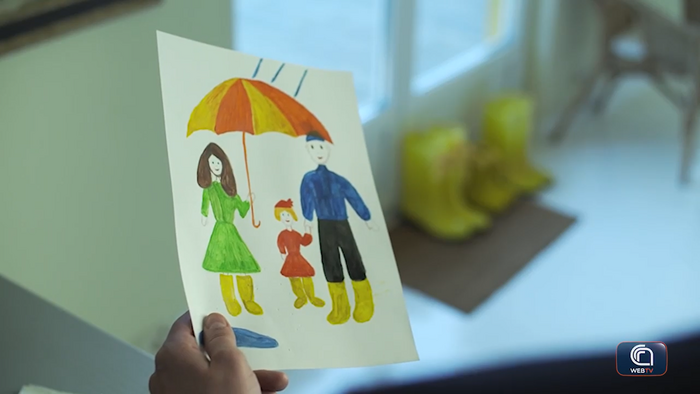The representations of women in painting, since antiquity, have had to do with their role in society. Throughout history, women have appeared in pictures framed by certain types: the angel of the home (good mother and wife), the fem fatal (seductive and evil woman), the idle women (high class), the modern woman (at the dawn of the 20th century, driving or smoking as anecdotal), etc.
Those images of women have been perpetuated to this day. Now, we see those prototypes in advertising, series, movies or video clips. We do not know, but we did not invent anything new in them, but we carried the weight of an ancient visual and literary history.
The history of art studies this transmission of images through the "iconographic method", which several experts developed since the end of the 19th century.
This method analyzes works of art from the symbols that appear in the works, what meanings are given to them in each time and place, and how they evolve. Applying the method allows us to understand how gender stereotypes have been constructed. One of the many issues that can be studied are images related to sensuality and eroticism.
It is difficult to know from what moment the human being began to represent sensuality in art. The truth is that we find scenes of explicit sex in all cultures since ancient times.
Bathing, provocation or intimacy violated
An interesting case is that of the woman who is taking a bath and is raped. We find it in a myth of antiquity such as Artemis (the goddess Diana in Roman mythology) and Actaeon, highly represented during the Modern Age by painters such as Titian, Clerck and Alsloot or Heintz, among others.
The myth, narrated by Ovid, tells that Artemis, while taking a bath in the river, surprised the hunter Acteón observing her. As punishment, the goddess turned her into a deer to be caught by her own dogs. However, the moment chosen by painters is not that, but the moment in which man observes the goddess. This scene is repeated in the literary work The Seven Infants of Lara , although with hardly any plastic representations.
We find a very similar episode from the Bible: Susana and the old men, a story very represented in the painting. Susana, a married woman, is observed by two old judges while taking a bath. By rejecting her propositions, she is falsely accused of adultery.
Thanks to God's intercession, the old people end up being punished. All in all, once again the moment traditionally captured by painting is when it is observed, not that of exemplary punishment. Susana's image appears as a prototype of the erotic and not as the embodiment of rape.
Only in the work of Artemisia Gentileschi, an Italian Baroque painter, does the situation seem more violent than sensual. The contemporary American restorer and artist Kathleen Gilje, took advantage of this vision of Gentileschi to carry out one of her "alternative readings": her copy of the painting included a first version, recovered with an x-ray, in which Susana appears holding a knife to defend herself and with the face contorted with horror. With her proposal, Gilje simulated a first version of Gentileschi that never really existed. In addition, on the x-ray the violated character is not Susana, but Gentileschi herself, raped in real life by Agostino Tassi.
Along the same lines, several artists led by Judy Chicago performed the performance Ablutions in 1972 , to compensate all those women represented as sensual when they suffered a violent act.
However, this image keeps repeating itself. For example, in the first scene in which Daenerys, protagonist of the series Game of Thrones , appears, in which she prepares to take a bath under the incestuous gaze of her brother.
The woman, the apple and the evil
Other cases are found through traditional short stories. For example, the mythological story of Eros and Psyche that Apuleyo tells, inspired the well-known tale of Beauty and the Beast , whose influence reaches Pedro Almodóvar, who linked Átame with the version of the Disney tale.
The apple also survives throughout history as a symbol of the evil associated with women. An apple is at the origin of the Trojan War, triggered by a dispute between Aphrodite, Athena and Hera. Paris chooses Aphrodite as the most beautiful and the goddess gives him Helena's love in return, which causes the battle.
The apple is again present in the Bible. The demon gets Eve and Adam to eat the forbidden fruit, an apple. It also appears in the story of Snow White. Of course, again a dispute between two women for being the most beautiful.
Challenges in our society
All these representations of the sensual are portrayed from the masculine point of view. It is striking how in many episodes the erotic is shown through women who are attacked. But what now? Is female sexuality still a taboo in the arts? Does violence still prevail?
Some recent studies indicate how the pornography that our young people consume is riddled with violent acts against women, rape, even in a group. This could be one of the reasons that this type of action occurs more and more frequently in reality. For this reason we must educate in values such as gender equality also through art.
It is a challenge that a society that communicates through images, such as emoticons, acquires more visual culture. This could be achieved through further training in art history, working on the visual analysis of images that surround us and are consumed by youth, just as we do with texts. In this way, we would be more reflective and critical regarding the visual and more aware of what we perceive through sight.
As the writer and art critic John Berger said in the 1970s:
"Men look at women. Women look at themselves through how they are looked at. This determines not only most relationships between men and women, but also the relationship of women with themselves.
This text comes from the article 'Eroticism and sensuality: visual survivals from a gender perspective', published in a preprint in the Calle 14 magazine in Colombia.




/cloudfront-eu-central-1.images.arcpublishing.com/prisa/EMYXC3EVHNEG3OJHGIQCB2IVYA.jpg)

